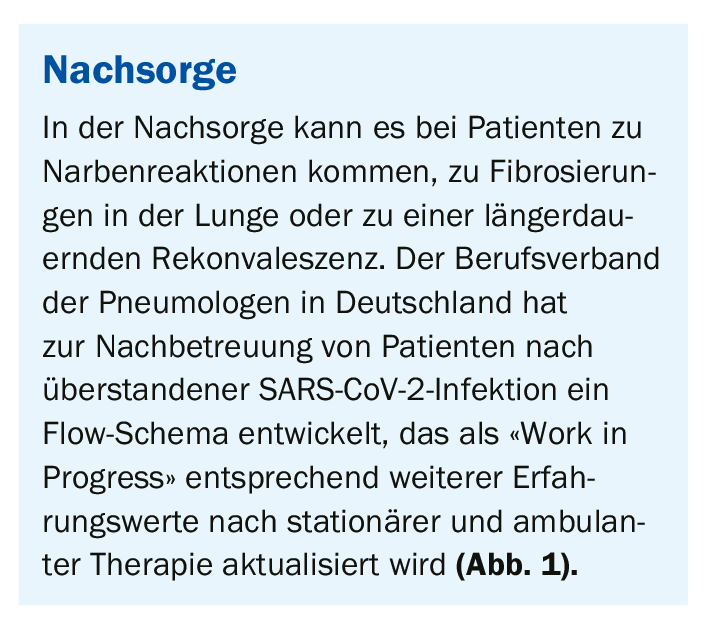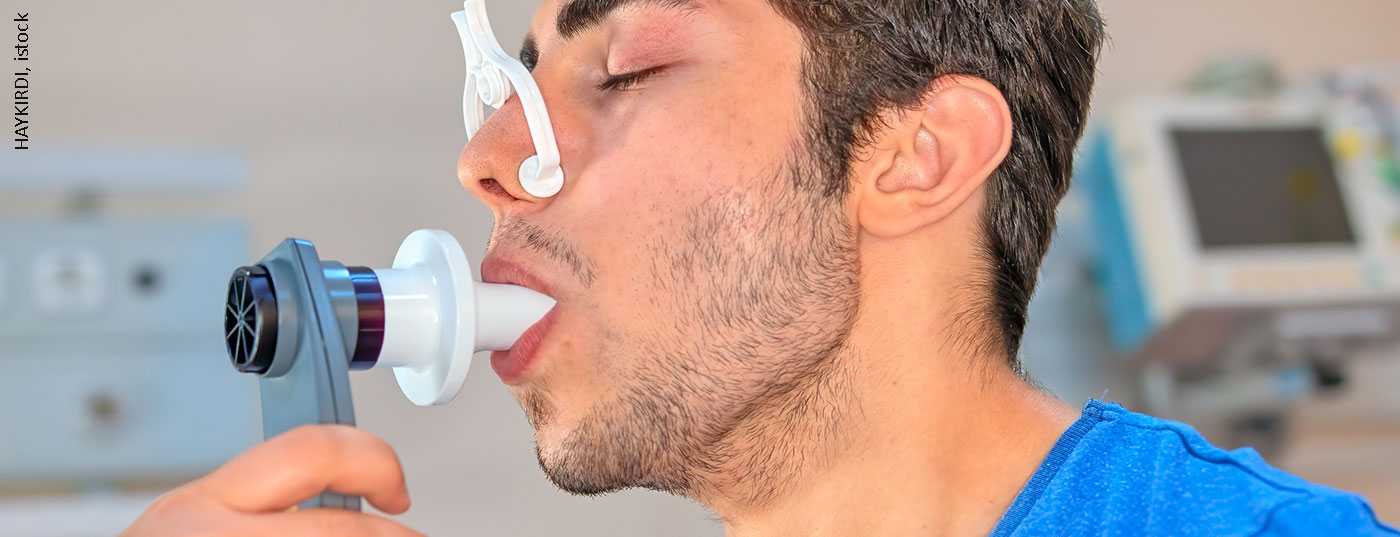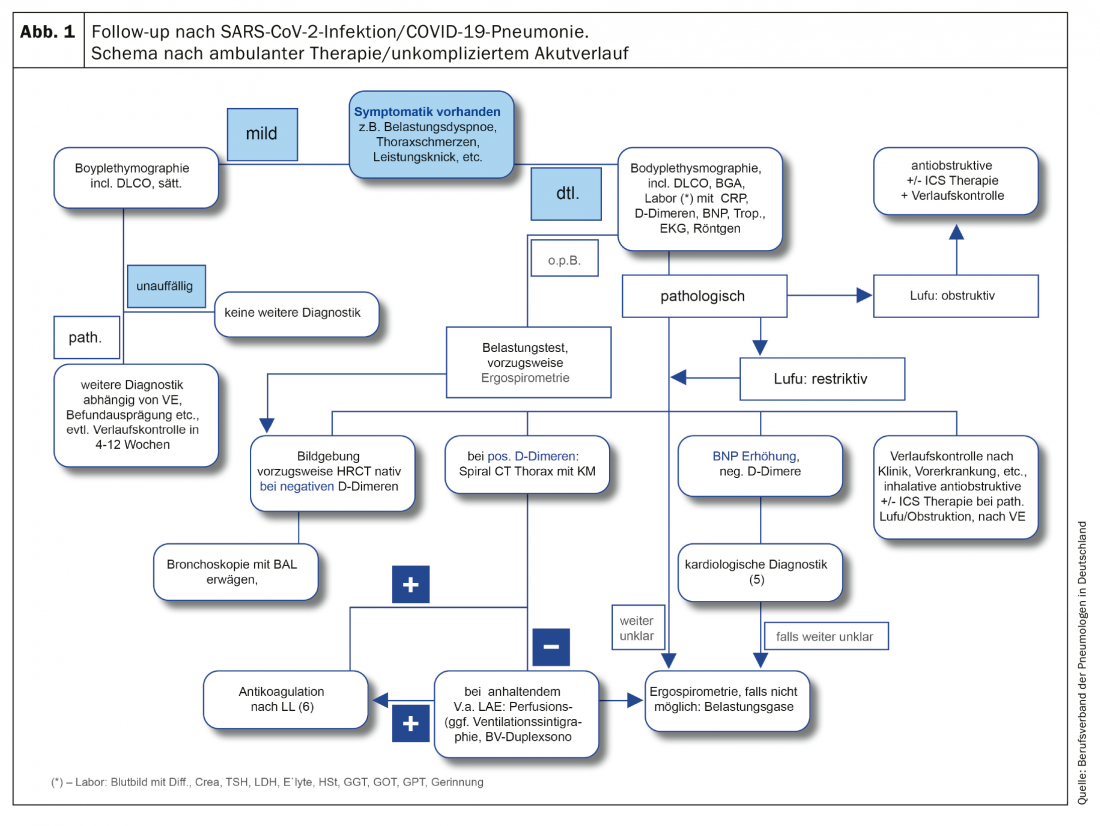Is there an increased risk for COVID-19 patients if they have chronic lung disease? The answer to this is a resounding yes. Asthma patients are relatively well off compared to their peers with COPD or interstitial lung disease. Either way, however, Corona is not a reason to discontinue an existing therapy.
In a study of 1150 patients from two hospitals in New York who died from COVID-19, in terms of comorbidities, 8% had asthma and 9% had chronic obstructive pulmonary disease (COPD) or interstitial lung disease [1]. This roughly reflects the prevalence of these diseases in the general population. However, when we look at who among these patients was actually at increased risk of mortality, we see that COPD and interstitial lung disease were significantly more affected. “Because it is a destructive disease, which also deprives the person to a certain extent of the possibility to react to such a viral infection. This is not true for asthma,” explained Prof. Dr. Roland Buhl, head of the Pneumology focus at the University Medical Center Mainz (D). These figures were also confirmed by another recent paper from England [2], in which 17 million people were studied, including approximately 10,900 who died of COVID-19. The result: the older, the higher the mortality risk, the factors male sex and high body weight were associated with a greater risk, and with it diabetes. The chronic respiratory diseases also had a significantly higher risk – except for asthma: Here, only the very severe courses, which frequently require cortisone, were conspicuous.
Increased mortality risk: asthma no, COPD yes.
With regard to the consequences for asthma therapy, uncertainty is always created because cortisone is often generally condemned. This is wrong, the expert clarified. According to the current GINA guideline, all agents used for asthma therapy should continue to be given in the event of SARS-CoV-2 infection: “Inhaled corticosteroids, bronchodilators, both beta agonists and anticholinergics, biologics, and even oral cortisone can be taken by patients unabated.”
Also in England, patients requiring hospitalization for COVID-19 disease were treated with high doses of the highly effective corticosteroid dexamethasone (up to 6 mg per day for up to 10 days) [3]. Treatment reduced mortality modestly in all patients, but significantly (35%) in the most critically ill who needed ventilation. According to Prof. Buhl’s conclusion, cortisone per se is also a drug that can be used for COVID-19 if the indication is confirmed.
On the other hand, caution is advised with nebulizers: All procedures involving the generation of an aerosol should only be used in justified cases. The pulmonologist referred to metered-dose inhalers, which can be used with large-volume inhalation aids (spacers) during exacerbations and are just as effective. In any case, however, care should be taken to wear a tight-fitting face mask to protect physicians, caregivers, and family members.
Double immunosuppressive effect?
What about severe asthma – do biologics have an immunosuppressive effect in COVID patients? The answer to that is no. Again, the recommendation is clearly to continue biologics therapy and not to abruptly discontinue prescribed OCS.
We currently have five biologics available for the treatment of asthma, four of which – the anti-IL-4(R)-directed dupilumab and the anti-IL-5(R)-directed mepolizumab, reslizumab and benralizumab – are for eosinophilic asthma. There are initial data from China [4] that eosinopenia occurs in the setting of SARS-CoV-2 infection. Because severely ill patients have very low eosinophil counts, there is concern about being at additional risk from antibodies that also lower eosinophil counts. “No,” Prof. Buhl gave the all-clear: “Because here the low eosinophil counts are an expression of the severity of the infection and the inflammation, but not directly pathogenetically relevant.” Evaluations showed that there is no increased risk of viral infection under such therapy. The recommendations of the professional societies are therefore also here: continue the biologics, if possible increasingly via self-injection and telemedicine, and in case of doubt initially extend the dose interval if necessary.

Continue antifibrotics
The same applies to COPD: The proven inhalative therapy should be maintained. In general, however, these patients are more affected by SARS-CoV-2 infection than asthma cases. Therefore, GOLD strongly recommends following local behavioral recommendations to minimize the risk of infection and seeking medical advice if signs of infection appear. In addition, there is no known scientific evidence to support discontinuation of inhaled (or oral) corticosteroid therapy in COPD patients during the COVID-19 pandemic. In case of doubt, it is advised to ensure oxygen therapy if necessary and, of course, to seek medical help at an early stage.
If immunosuppression is indicated for interstitial lung disease, it should be continued. This avoids high-dose rescue therapies. In the case of SARS-CoV-2 infection, it may be necessary to interrupt therapy, “while continuing antifibrotics that are not immunosuppressive,” Prof. Buhl said. And of course, he said, symptomatic therapy must be considered if a patient develops COVID-19 disease and develops problems.
Source: StreamedUp PneumoLive: COVID-19 III, Livestream 07/28/2020.
Literature:
- Cummings MJ, et al: Lancet 2020; 395(10239): 1763-1770.
- Williamson EJ, et al: Nature 2020; doi: 10.1038/s41586-020-2521-4.
- Horby P, et al: N Engl J Med 2020; doi: 10.1056/NEJMoa2021436.
- Zhang JJ, et al: Allergy 2020; 75(7): 1730-1741; doi: 10.1111/all.14238.













